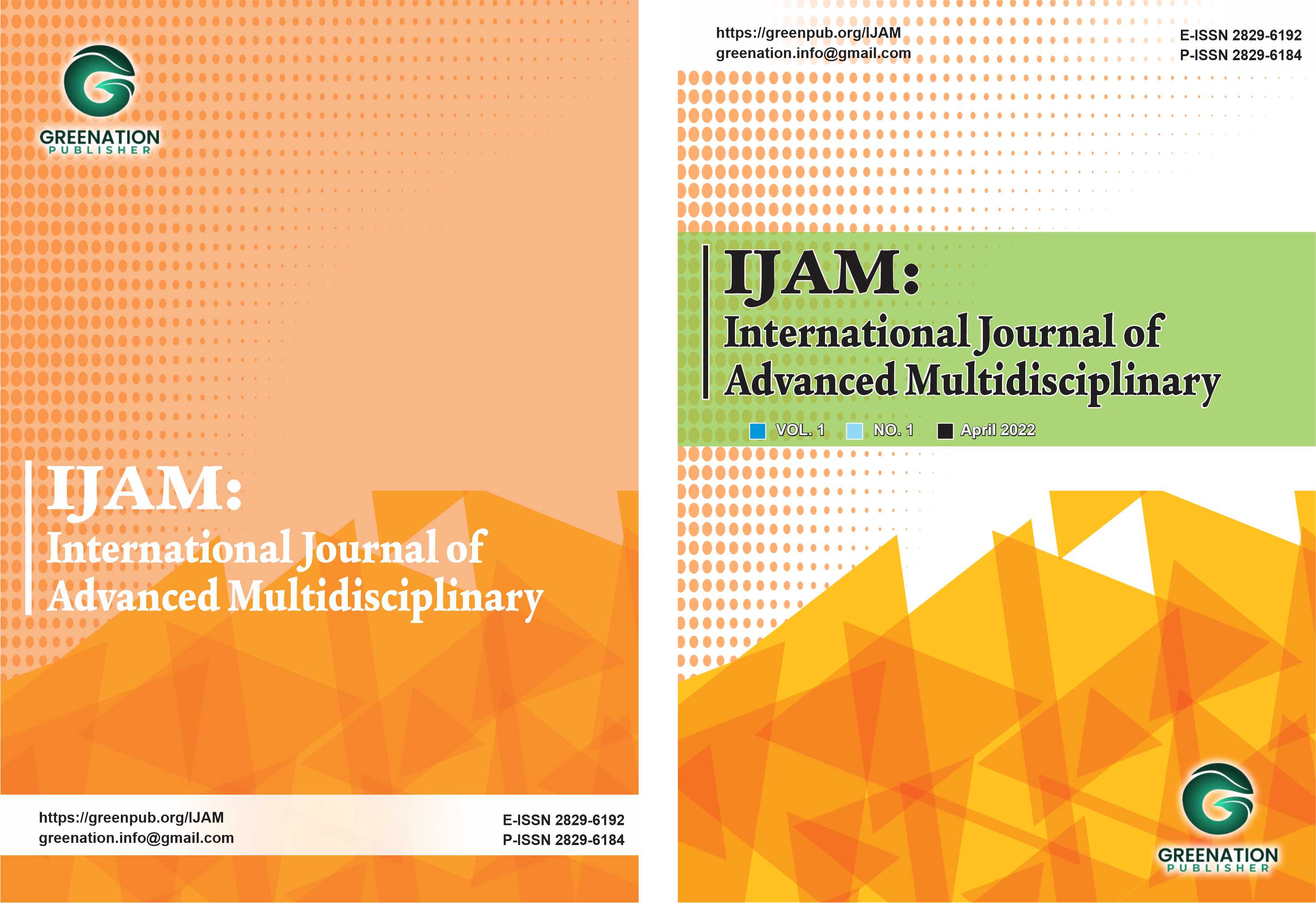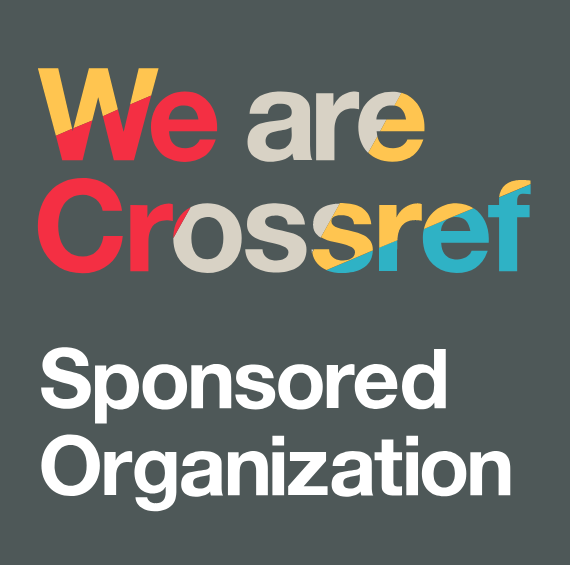Does Competitive Advantage Mediate the Relationship between Innovation and Business Performance?
DOI:
https://doi.org/10.38035/ijam.v4i1.870Keywords:
Product innovation, Marketing Innovation, Competitive Advantage, Business Performance, Higher Learning InstitutionsAbstract
The aim of the study is to describe product innovation implementation and marketing innovation implementation, competitive advantage of private Vocational Higher Education Institutions (VHEIs), and their business performances. The study is also to examine the effects of product innovation and marketing innovation on business performance which is mediated by competitive advantage. The unit analysis is leaders of private VHEIs operating in West Java Province Indonesia. This research applies quantitative methods. The populations of the research were 118 private VHEIs in West Java Province, Indonesia and the respondents were 100 leaders of private VHEIs.The sampling technique is simple random sampling. And the study uses the Partial Least Square technique for data analysis. The findings are both product innovation and marketing innovation have positive effects on competitive advantage. Besides, they also have positive effects on business performance. Furthermore, competitive advantage mediates the innovation – business performance relationship. The leaders of VHEIs need to implement product and marketing innovation as well as their competitive advantage to improve their business performance.
References
Adnani, L., Jusuf, E., Alamsyah, K., & Jamaludin, M. (2023). The role of innovation and information sharing in supply chain management and business performance of halal products in tourism destinations. Uncertain Supply Chain Management, 11(1), 195–202.
Al-khawaldah, R., Al-zoubi, W., Alshaer, S., Almarshad, M., ALShalabi, F., Altahrawi, M., & Al-hawary, S. (2022). Green supply chain management and competitive advantage: The mediating role of organizational ambidexterity. Uncertain Supply Chain Management, 10(3), 961–972.
Aniyati, I., & Indayani, L. (2023). The Effect of Market Orientation and Product Innovation on Marketing Performance Through Competitive Advantage as an Intervening Variable in MSME Bags in Sidoarjo. Academia Open, 8, 10–21070.
Bhandari, K. R., Ranta, M., & Salo, J. (2022). The resource?based view, stakeholder capitalism, ESG, and sustainable competitive advantage: The firm’s embeddedness into ecology, society, and governance. Business Strategy and the Environment, 31(4), 1525–1537.
Christa, U., & Kristinae, V. (2021). The effect of product innovation on business performance during COVID 19 pandemic. Uncertain Supply Chain Management, 9(1), 151–158.
Cuevas-Vargas, H., & Cortés-Palacios, H. A. (2020). Efectos de la estructura de capital en la innovación. Investigación Administrativa, 49(126).
Cuevas Vargas, H., Fernández Escobedo, R., Cortés Palacios, H. A., & Ramírez Lemus, L. (2021). The relation between adoption of information and communication technologies and marketing innovation as a key strategy to improve business performance.
Distanont, A., & Khongmalai, O. (2020). The role of innovation in creating a competitive advantage. Kasetsart Journal of Social Sciences, 41(1), 15–21.
Dong, Q., Wu, Y., Lin, H., Sun, Z., & Liang, R. (2022). Fostering green innovation for corporate competitive advantages in big data era: the role of institutional benefits. Technology Analysis & Strategic Management, 1–14.
Grant, R., & Phene, A. (2022). The knowledge based view and global strategy: Past impact and future potential. Global Strategy Journal, 12(1), 3–30.
Hang, Y., Sarfraz, M., Khalid, R., Ozturk, I., & Tariq, J. (2022). Does corporate social responsibility and green product innovation boost organizational performance? a moderated mediation model of competitive advantage and green trust. Economic Research-Ekonomska Istraživanja, 35(1), 5379–5399.
Heij, C. V., Volberda, H. W., Van den Bosch, F. A., & Hollen, R. M. (2020). How to leverage the impact of R&D on product innovation? The moderating effect of management innovation. R&D Management, 50(2), 277–294.
Higher Education Statistics 2020. (n.d.).
Hussain, I., Mu, S., Mohiuddin, M., Danish, R. Q., & Sair, S. A. (2020). Effects of sustainable brand equity and marketing innovation on market performance in hospitality industry: Mediating effects of sustainable competitive advantage. Sustainability, 12(7), 2939.
Indonesia Official Statistical News No. 35/05/Th. XXVI 5 May 2023. (n.d.).
Jeong, S. W., & Chung, J. E. (2023). Enhancing competitive advantage and financial performance of consumer-goods SMEs in export markets: how do social capital and marketing innovation matter? Asia Pacific Journal of Marketing and Logistics, 35(1), 74–89.
Khairusy, M. A., Hurriyati, R., Suwatno, S., Gaffar, V., Dirgantari, P. D., & Setiana, S. M. (2022). Marketing innovation: Development strategy of private university in Indonesia. Journal of Eastern European and Central Asian Research (JEECAR), 9(5), 776–788.
Khamaludin, K., Syam, S., Rismaningsih, F., Lusiani, L., Arlianti, L., Herlani, A., ... & Widiyatun, F. (2022). The influence of social media marketing, product innovation and market orientation on Indonesian SMEs marketing performance. International Journal of Data and Network Science, 6(1), 9–16.
Lestari, D. M., Haryono, S., & Furwanti, R. (2022). The Role of Competitive Advantage and the Exploration of Religiosity to Decrease Customer Switching Behaviour in Islamic Banking. Annual International Conference on Islamic Economics and Business (AICIEB), 119–132.
Medrano, N., Cornejo-Cañamares, M., & Olarte-Pascual, C. (2020). The impact of marketing innovation on companies’ environmental orientation. Journal of Business & Industrial Marketing, 35(1), 1–12.
Muis, I., & Isyanto, P. (2021). Market Orientation, Transformational Leadership, Partnership Effects on Organizational Performance: A Competitive Advantage as a Mediator. Binus Business Review, 12(3), 263–277.
Muis, I., & Isyanto, P. (2023). Does Competitive Advantage Mediate Innovation Capability and Organizational Ambidexterity-Organizational Performance Relationship? International Journal of Artificial Intelligence Research, 6(1.1).
Na, Y. K., Kang, S., & Jeong, H. Y. (2019). The effect of market orientation on performance of sharing economy business: Focusing on marketing innovation and sustainable competitive advantage. Sustainability, 11(3), 729.
Nadda, V., & Arnott, I. (2020). Marketing Innovation in Tourism. In Handbook of Research on Innovations in Technology and Marketing for the Connected Consumer . IGI Global, 401–415.
National Education System Law. (2003).
Olazo, D. (2020). The Mediating Role of Marketing Innovation to the Marketing Competence and Sustainable Competitive Advantage of the Selected Small and Medium Enterprises. EasyChair, (No. 4738).
Ramadani, V., Hisrich, R. D., Abazi-Alili, H., Dana, L. P., Panthi, L., & Abazi-Bexheti, L. (2019). Product innovation and firm performance in transition economies: A multi-stage estimation approach. Technological Forecasting and Social Change, 140, 271–280.
Sugiyono. (2018). Metode Penelitian Kuantitatif, Kualitatif dan R&D (28th ed.). Alfabeta.
Udriyah, U., Tham, J., & Azam, S. (2019). The effects of market orientation and innovation on competitive advantage and business performance of textile SMEs. Management Science Letters, 9(9), 1419–1428.
Wentzel, L., Fapohunda, J. A., & Haldenwang, R. (2022). The relationship between the integration of CSR and sustainable business performance: Perceptions of SMEs in the South African construction industry. Sustainability, 14(3), 1049.
West Java Official Statistical News No. 32/05/32/Th. XXV, 5 May 2023. (n.d.).
Wongsansukcharoen, J., & Thaweepaiboonwong, J. (2023). Effect of innovations in human resource practices, innovation capabilities, and competitive advantage on small and medium enterprises’ performance in Thailand. European Research on Management and Business Economics, 29(1), 100210.
Yusuf, A. (2021). The Influence of Product Innovation and Brand Image on Customer Purchase Decision on Oppo Smartphone Products in South Tangerang City. Budapest International Research and Critics Institute-Journal (BIRCI-Journal, 2(1), 472–481.
Downloads
Published
How to Cite
Issue
Section
License
Copyright (c) 2025 Indra Muis

This work is licensed under a Creative Commons Attribution 4.0 International License.
Authors who publish their manuscripts in this journal agree to the following conditions:
- The copyright on each article belongs to the author(s).
- The author acknowledges that the International Journal of Advanced Multidisciplinary (IJAM) has the right to be the first to publish with a Creative Commons Attribution 4.0 International license (Attribution 4.0 International (CC BY 4.0).
- Authors can submit articles separately, arrange for the non-exclusive distribution of manuscripts that have been published in this journal into other versions (e.g., sent to the author's institutional repository, publication into books, etc.), by acknowledging that the manuscript has been published for the first time in the International Journal of Advanced Multidisciplinary (IJAM).























